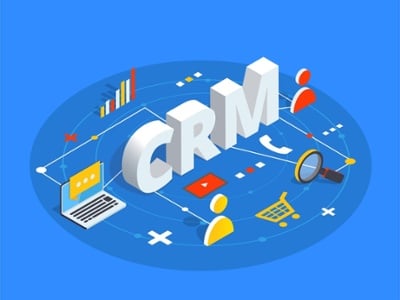CRM: The ideal platform for customer management
From the first year of operation of any company, one of the main challenges in its day to day is the management of the relationship with its...
4 min read
Por Oscar Agüero | Jul 15, 2021
At the birth of every cooperative, the objective of improving and facilitating the conditions of its members, through the provision of services, production and/or marketing of products, is established in one way or another.
In line with this, "tools" have been sought to facilitate the management of the processes that support the entire organization, from financial, human capital, operational, service, etc. processes.
This has allowed cooperatives to build up, from the outset, a series of in-house or outsourced developments, with a high degree of customization; and this is a good thing, as it is the basis for the systematization of a large part of their operational processes.
Now, continuing with the process of natural evolution of the systemic environment, we can see a second stage, in which these organizations began to substitute their very personalized systems by adopting pre-built and pre-configured "packages", which already provided an important added value: the famous "good practices".
This new generation of systems is characterized by containing within its logic, the incorporation of what are considered industry standards, thus incorporating systems that already comply with international standards such as NIF, NIC and others, which are required to have a system aligned with the international standard.
At this stage, the systems take cooperatives a step further, strengthening their operational processes in the face of new demands from their own internal management.
However, we can note a third stage which is still in its development, but which has been accelerating in recent years, since technology adoption cycles are becoming faster and faster and are also influenced by factors such as generational change and specific situations such as the change in consumer habits because of the global health emergency.
This third generation of systems has a particularly important characteristic, which is that the focus is now on the consumer, customer, or partner. In other words, we are moving from an inertia centered on internal processes to a more external approach, from the point of view of our customers, of what they need and, why not, of the service they expect.
This is where cooperatives, supported by digital tools, begin to "listen" to what customers or members are saying and what they need. Digital channels are becoming indispensable. We see websites, Facebook business accounts, chats, YouTube channels, LinkedIn profiles, Instagram, etc., etc., etc., etc., being created.
It is understandable that this is happening in this way, because the pressure to be "digital" is great, but we must stop and ask ourselves:
How are we going to manage all these channels?
Y lo más importante, ¿cómo vamos a gestionar la información que se genera de estos, para entregar valor al asociado? And most importantly, how are we going to manage the information that is generated from them, to deliver value to the associate?
Well, this is where we need a piece that ties all this together: CRM, known by its acronym as Customer Relationship Management. This is a system that manages marketing, sales, and service processes, but focused on the customer.
We are going to examine each of these perspectives and how each of them generates value for the Cooperative and its members.

Let's first look at the marketing perspective.
As we mentioned earlier, digital presence is extremely important, but there is little point in generating paid advertising on the networks if we cannot channel the interactions it generates. For this reason, it is necessary to have a consolidated base that allows us to follow up, mature and make a service or product of the cooperative a reality.
A CRM such as HubSpot allows them to carry out marketing aimed at controlling publications on social networks and generating valuable content through blogs, newsletters, e-books and infographics, which are ultimately Inbound marketing tools that contribute to three aspects:
Another aspect of CRM management is sales.
In CRM, sales are a process of monitoring and executing various stages of maturity.
Here the system will allow cooperatives to collect relevant data on their sales prospects and follow up on the actions that take place throughout the maturity process, centralizing all the steps that are developed by means of e-mails, meetings and even allowing telephone calls to be recorded as part of each prospect's file.
As the client matures in the process of acquiring the service or product, we can change the status of each opportunity, to have clarity on where we are with each client and what activity can be generated to help the client/associate in the decision-making process.
Finally, we have the optics of the service process.
The service process is one of the most important points, where through a 360-degree view of the customer, we can identify the customer when they talk to us via social networks or email and the cooperative behind the counter can identify that it is the same person.
This functionality, called omni-channeling, is of vital importance today, when we have multiple means by which the customer communicates with the cooperative (email, chatbot, telephone, social networks, etc.).
With this branch of CRM, we will be able to know in advance when a member calls the service platform, what issues have been discussed with them, what resolution they have been given or what part of the process they are in at the cooperative.
Here the improvement in the service will be very palpable for the associate, since the CRM will allow:
As we can see, a CRM such as HubSpot will enable cooperatives:
Schedule a consulting session with one of our experts and let us take your cooperative to generate more value for your members.

From the first year of operation of any company, one of the main challenges in its day to day is the management of the relationship with its...

Setting up and establishing a business has never been simpler, but growing a business is the real challenge. Where once short-sighted strategies were...

Discover how to adapt business rules for sales and service teams within HubSpot. How to automate business and ticket tracking.